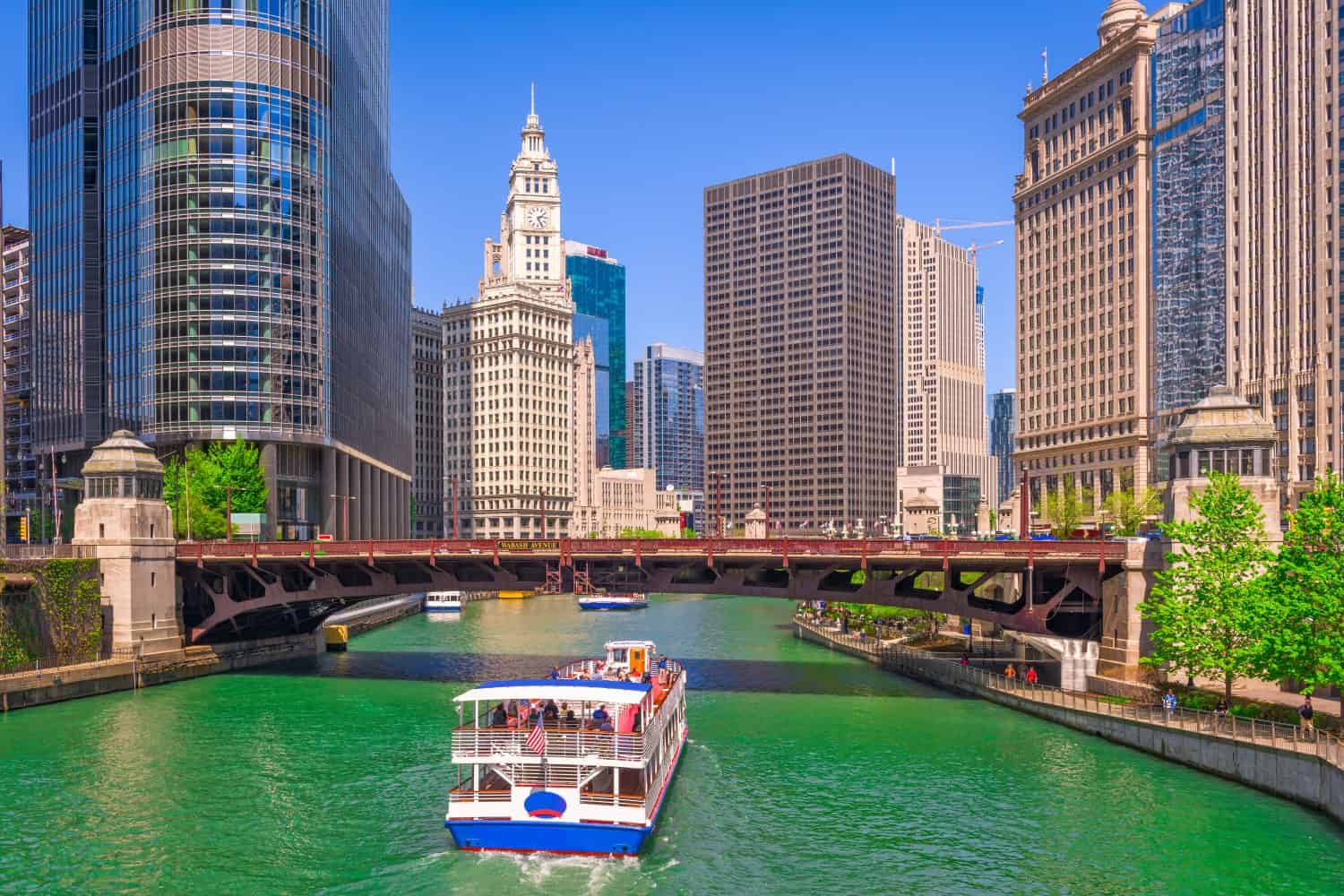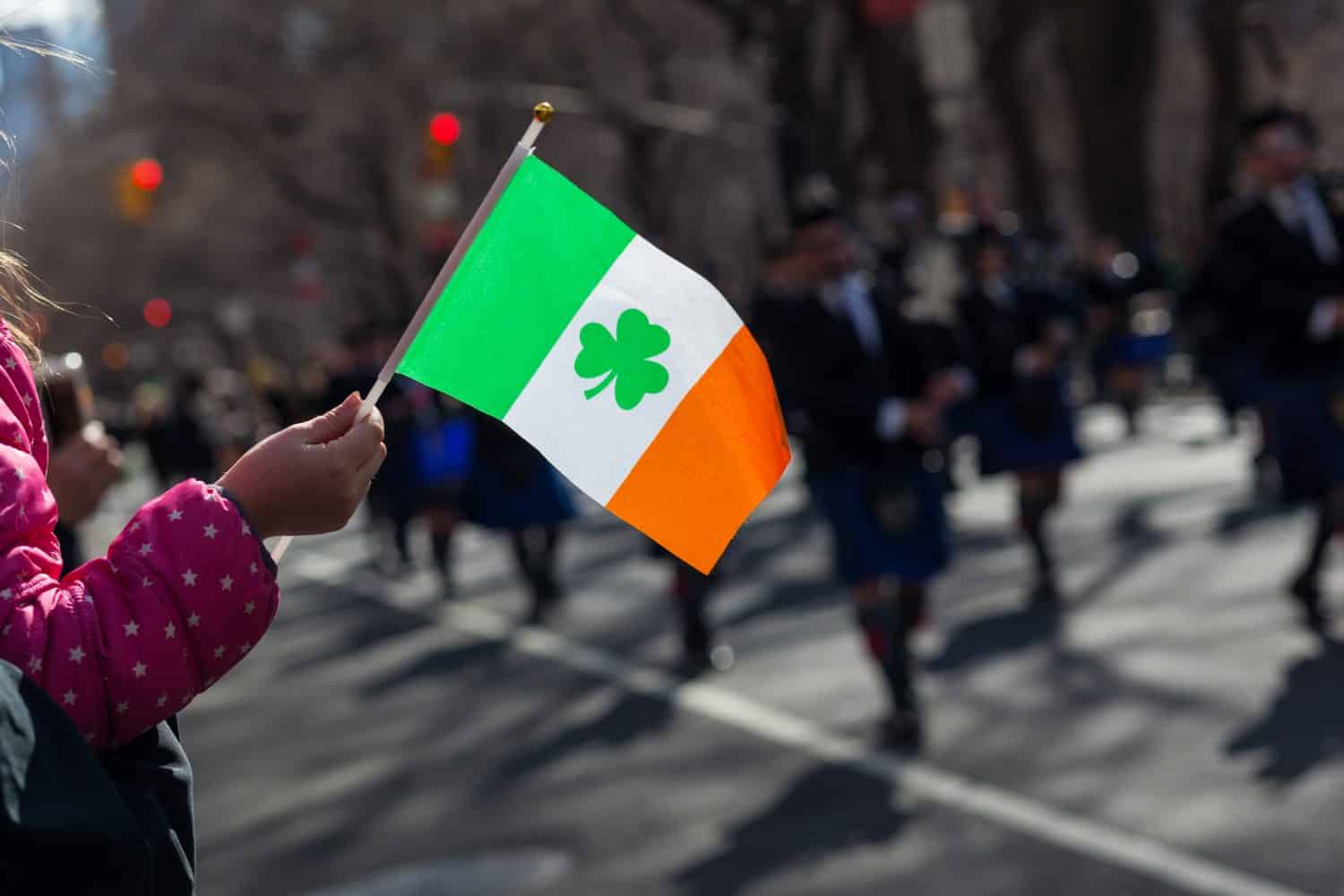St. Patrick’s Day is swiftly approaching, and along with it comes festivities of every kind. While some people celebrate by wearing green and watching parades, others enjoy eating and drinking just like the Irish. Of all people in the U.S., Chicagoans are most famous for their insane display of Irish spirit. Each year, locals witness the Chicago River transform into the perfect shamrock green. But how did this tradition come to be? Let’s discuss how the tradition of dying the Chicago River green began and explore methods for how it’s achieved.
Origins of Dying the Chicago River Green

Chicagoans have been enjoying this tradition for over 50 years.
©vichie81/Shutterstock.com
The tradition of dying the Chicago River green has taken place for more than half a century. Believe it or not, this did not start out as a creative way for locals to get festive for St. Patrick’s Day. In 1961, the mayor of Chicago set out to determine the origin of sewage in the Chicago River. To determine this, the Chicago Journeymen Plumbers Local Union used small amounts of green dye to detect leaking pipes. Many thought the color used was similar to the shamrock green associated with St. Patrick’s Day. Because of this, the union decided to unleash a large amount of this dye into the Chicago River in 1962 to celebrate the holiday! Since then, this has become a beloved yearly tradition that many natives and tourists look forward to.
How It’s Achieved

Roughly 200,000 Irish people live in Chicago.
©Sean Pavone/Shutterstock.com
Even though this seems like a huge undertaking, accomplishing this task is relatively easy. Only a handful of workers and two boats are responsible for dispersing the dye throughout the river. The dye itself comes in a powder form and must be distributed manually. Interestingly, the powder is orange! The entire process only takes about two hours from start to finish. According to National Public Radio Chicago, “Today the orange powder is spread by two motorboats. One dumps the powder and the other stirs the water, turning the river completely green within minutes.” Thanks to the individuals working at the Chicago Journeymen Plumbers Local Union, thousands of people get to enjoy the green river each year.
When Does It Take Place?

Chicago first held its St. Patrick’s Day parade in 1843.
©InigoTena/Shutterstock.com
Workers will typically dye the Chicago River green just prior to the city’s annual St. Patrick’s Day parade. This takes place on St. Patrick’s Day each year, which traditionally occurs on March 17th. This is the only time locals will be able to enjoy the green river. If you want to catch a glimpse of it in person, be sure to head down to the river around the time the parade starts. The green dye only lasts for a few hours before the river begins to return to its original color.
Is It Safe to Dye the Chicago River Green?
There’s no doubt that some individuals will be concerned about the safety of this practice. Despite the intensity of the color, dying the Chicago River green is safe. Although the dye originally used by the Chicago Journeymen Plumbers Local Union was comprised of chemicals, a switch was made to a vegetable-based dye in 1966. Because of this, it poses no threat to marine life, land animals, or humans.
Popular Criticisms

Each year, about two million people participate in the St. Patrick’s Day festivities in Chicago.
©Todd Maertz/Shutterstock.com
Although a large majority of locals enjoy this tradition and see it as a fun and harmless way to get into the St. Patrick’s Day spirit, others are not as enthusiastic. Detractors often comment that dying the river inspires pollution. While the dye used is largely considered safe, there are growing concerns about people concocting their own unsafe dyes and unleashing them in public waters. However, nothing incredibly environmentally damaging has taken place yet.
Final Thoughts
Whether you’re a Chicago native or just visiting the area during St. Patrick’s Day, this event is a must-see. The tradition has become increasingly popular over time, and more join in to celebrate each year. In fact, it’s somewhat of a national sensation. As Chicago’s influence reaches further, other cities have begun to dye small bodies of water themselves! San Antonio, Texas and Tampa, Florida have adopted this tradition as well and many more are sure to follow suit.
Thank you for reading! Have some feedback for us? Contact the AZ Animals editorial team.







